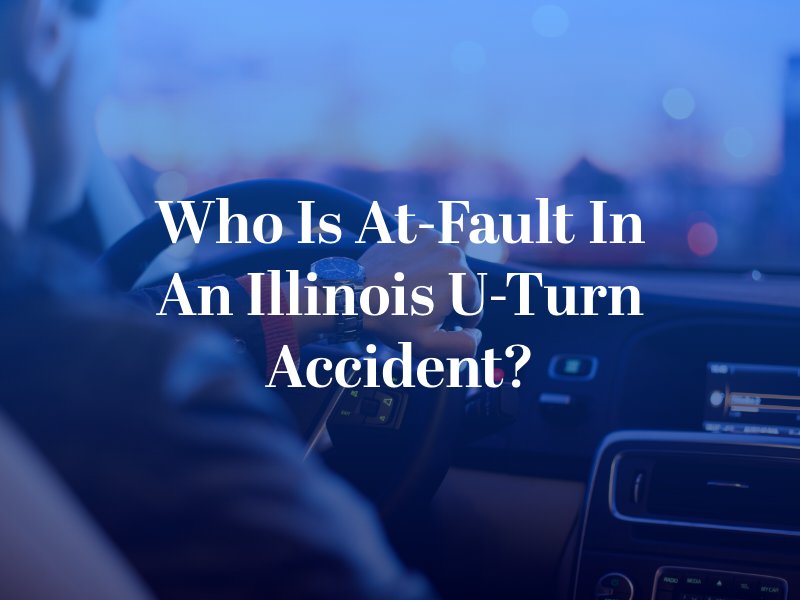Who Is At-Fault in a U-Turn Accident?

A car accident involving a U-turn can quickly become a complicated case of determining fault. Liability often depends on whether the driver making the U-turn had the right-of-way or if another driver failed to yield. Knowing the factors that influence fault in U-turn car accidents can help determine who is responsible for damages.
Is the Driver Making a U-Turn Always at Fault?
The driver making a U-turn is often assumed to be at fault, but liability depends on the circumstances of the crash. Most states require U-turning drivers to yield the right-of-way to oncoming traffic, as outlined in Illinois Vehicle Code 625 ILCS 5/11-802. If the driver failed to yield or made an unsafe turn, they may be responsible for the accident.
U-turns are prohibited in certain areas, including intersections with posted “No U-Turn” signs, school zones, and high-traffic roadways. Under Illinois Vehicle Code 625 ILCS 5/11-802, drivers may not make a U-turn unless it can be done safely and without interfering with other traffic. Violating these restrictions increases the risk of a crash and can serve as evidence of negligence in an accident claim.
If a driver makes an illegal U-turn across multiple lanes, in heavy traffic, or where visibility is poor, they may be held liable for any resulting collision. These maneuvers can obstruct oncoming vehicles, create unexpected hazards, and force other drivers to brake or swerve suddenly. Insurance companies and courts often view illegal U-turns as reckless behavior, making it difficult for the U-turning driver to dispute fault in an accident.
Can the Other Driver Be at Fault in a U-Turn Accident?
While the U-turning driver is often blamed for causing personal injuries and property damages, the other driver may share responsibility depending on how the accident occurred. In some cases, another driver’s reckless actions may have contributed to the crash. The following scenarios could place fault on the non-U-turning driver:
- Speeding – If an oncoming driver was traveling at excessive speeds, they may not have been able to stop in time to avoid the collision. Speeding reduces reaction time and can shift liability in a U-turn accident.
- Running a red light – If a driver ignored a red light or failed to yield at an intersection, they may be responsible for causing the crash. Traffic signal violations often play a key role in determining fault.
- Improper lane changes – A driver who merges into a lane without checking for traffic may be at fault. Sudden lane changes can make it difficult for U-turning drivers to complete their maneuver safely.
How Road Design and Traffic Signals Impact Fault in U-Turn Accidents
Traffic signals, signage, and road design play a crucial role in determining who has the right-of-way during a U-turn. Some intersections have designated U-turn lanes, while others prohibit the maneuver due to visibility concerns or heavy traffic flow. If an accident occurs at an intersection where U-turns are allowed, liability may be shared between both drivers, depending on how the crash happened.
In some cases, both drivers may be partially responsible for a U-turn accident. If the U-turning driver failed to yield but the other driver was distracted or speeding, liability may be split under comparative negligence laws in Illinois. When fault is shared, compensation may be reduced based on each driver’s percentage of responsibility for the crash per Illinois modified comparative negligence laws under 735 ILCS 5/2-1116.
